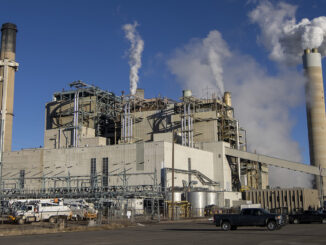
August 12, 2022
Data source: U.S. Energy Information Administration, International Energy Statistics and Short-Term Energy Outlook
Libya’s crude oil production averaged nearly 1.2 million barrels per day (b/d) during 2021. In late December 2021, armed militants shut in an estimated 0.4 million b/d of crude oil production. In April 2022, protesters across the country began to blockade several major ports and oil fields in Libya, causing production to fall to around 0.5 million b/d by July 2022. According to our Libya Country Analysis Brief, Libya’s crude oil production has continually fluctuated because of armed conflict and political instability since Libya’s first civil war, which began in 2011.
The 2014 elections in Libya led to a split government with two major opposing parties ruling different parts of the country. The internationally recognized Government of National Accord (GNA) governs the western region, and the Libyan National Army (LNA) governs the eastern region.
The GNA, the LNA, and separate local militias have used oil exports as political leverage and caused disruptions to Libya’s oil production between 2014 and 2020. After the GNA and the LNA signed a ceasefire and lifted the restrictions on oil production and exports in October 2020, preliminary real GDP growth estimates rose 70% for 2021. Crude oil export revenues are a significant part of Libya’s economy. In 2021, oil revenues accounted for an estimated 98% of Libya’s total government revenues, according to Libya’s Central Bank.
Real GDP growth fell 31% in 2020 as a result of the political conflicts between factions in the eastern and western regions; the oil export port blockades and pipeline shut-ins; and to a lesser degree, the economic slowdown during the global COVID-19 pandemic, according to a report from the World Bank.
At the end of 2021, Libya held Africa’s largest proved oil reserves, at 48 billion barrels, representing 39% of the continent’s total reserves. Libya ranked in the top 10 countries for proved oil reserves, according to Oil and Gas Journal.
Despite Libya’s large oil reserves, political conflicts and militia attacks on energy infrastructure have limited capital investments in the country’s oil and natural gas sectors. These challenges have also constrained exploration and development of its reserves since 2011. Although Libya is a member of OPEC, it is exempt from the production cuts under the April 2020 OPEC+ agreement because of Libya’s volatile political situation and constrained oil production.
Principal contributors: Kimberly Peterson, Candace Dunn



